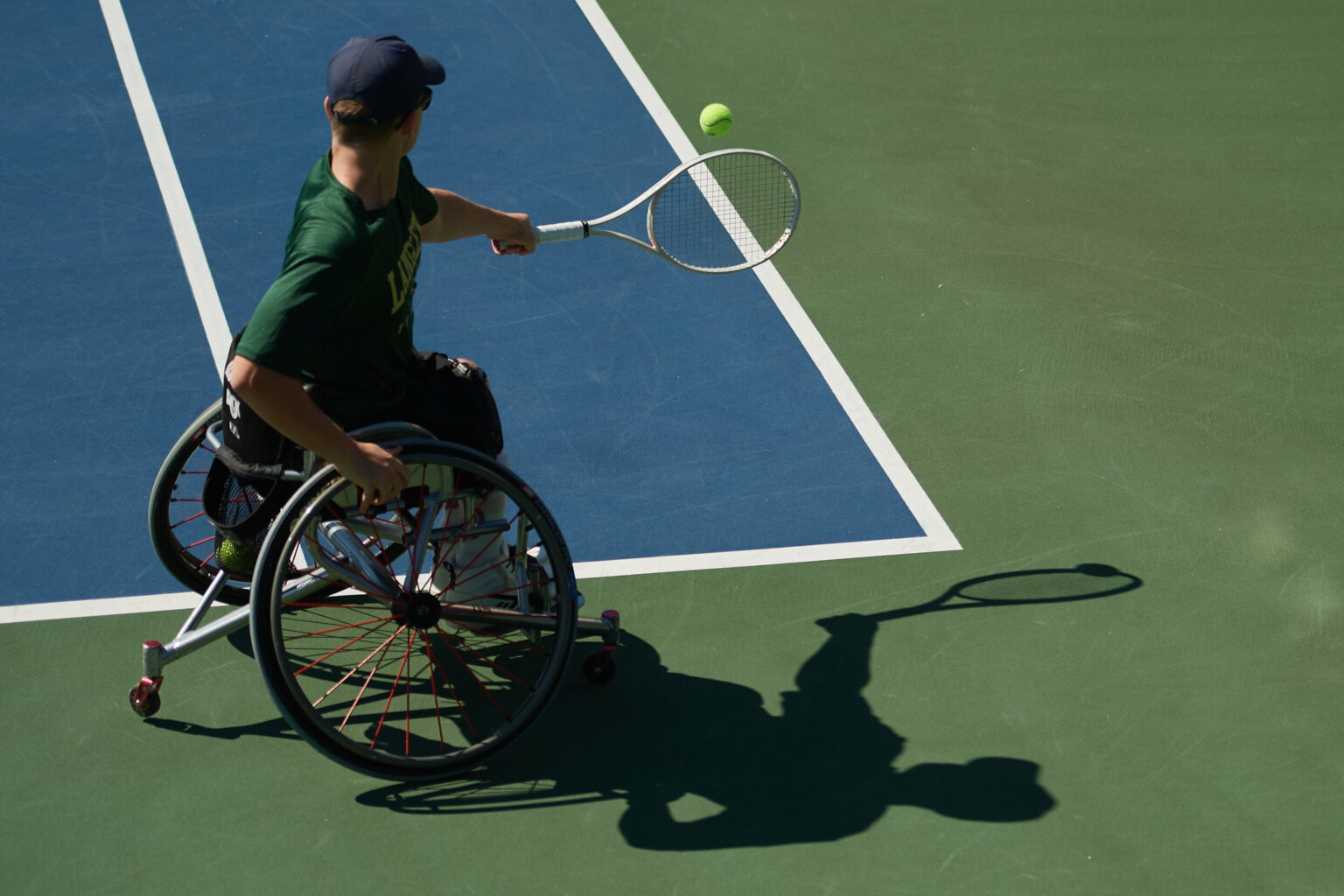Breaking Barriers: The Rise of Adaptive Tennis Among Young Athletes
Underneath a deep navy cap and shaded sunglasses, Spencer Davis exuded a look of unwavering resolve. The 15-year-old, who uses a wheelchair, was participating in a specialized tennis camp at the Junior Tennis Champions Center (JTCC) located in College Park this past May. Throughout the day, he was in constant motion across the center court, engaging in fast-paced doubles rallies that showcased his skill and determination.
Dynamic Play and Determination on the Court
During a rally, Davis shouted, “I’m there!” as he swiftly moved to intercept a delicate drop shot from his opponent. His quick reflexes allowed him to return the ball with precision before retreating to the baseline, eyes fixed on his adversaries to anticipate their next move. When the ball was returned to him again, he executed a powerful forehand volley that landed perfectly in bounds, earning applause from spectators.
“Let’s go!” Davis cheered, fist clenched in celebration.
Inspiring Dreams and Inclusive Training Programs
Born with spina bifida, Davis harbors ambitions of competing at collegiate and professional levels in wheelchair tennis. He is among two local high school students enrolled in JTCC’s adaptive tennis programs, which cater to athletes with various disabilities. These programs include wheelchair tennis, para standing tennis-designed for players who do not use wheelchairs-and hybrid classes that combine both formats. Maya Gareri, a freshman at Eleanor Roosevelt High School, also trains at JTCC. She has a limb difference affecting her right arm and actively participates in both her school team and adaptive tennis classes.
Fostering an Inclusive Tennis Community
“It’s been an incredible experience,” Davis shared. “The JTCC’s motto is ‘Tennis for Everybody,’ and I truly feel that. I get to play alongside able-bodied peers in integrated settings, and I also have the opportunity to compete with wheelchair tennis players in specialized environments. The diversity of experiences is really enriching.”
Gareri added, “I enjoy tennis because it’s a sport that combines independence with teamwork. It’s a solo activity, but you’re never truly alone on the court. I started in the para standing classes, which helped me connect with others who have similar challenges, making the sport even more enjoyable.”
Rapid Progress and Personal Growth
When Davis first joined JTCC four years ago, he had minimal tennis experience. However, under the guidance of Gabby Hesse, the center’s director of wheelchair and adaptive tennis, he quickly mastered fundamental techniques such as groundstrokes and serves, adapting his body movements to the unique demands of wheelchair play.
Today, Davis is deeply committed to the sport. He trains almost daily during the spring, balancing his participation with the Saxons, his high school team that has won state championships twice consecutively, and three to four weekly sessions at JTCC. He admires tennis star Frances Tiafoe, a JTCC alumnus, whom he remembers seeing at the center years ago and considers an inspiration.
Overcoming Challenges and Building Emotional Resilience
Initially, Davis faced difficulties maintaining focus during matches and often battled negative thoughts that affected his performance. However, tennis has become a transformative experience for him, fostering emotional maturity and resilience.
“Playing tennis has really helped me grow emotionally,” Davis explained. “I used to struggle with my feelings during matches, but now I’ve learned to stay calm, focus on each point, and keep a positive mindset.”
Newcomer Finds Her Niche in Tennis
Gareri, who started playing tennis last spring, found her passion in the sport after exploring other activities like running, swimming, karate, and soccer. Her family discovered JTCC’s adaptive programs, and she decided to give tennis a try.
“I’ve really fallen in love with tennis,” she said. “None of the other sports felt quite right for me, but tennis clicked immediately.”
She now participates in para standing and adaptive match play classes, which feature competitive singles and doubles matches involving both para standing and wheelchair players. Gareri also competed for her high school team this spring, enjoying the social and competitive aspects of the sport.
Refining Skills and Embracing Competition
During the recent weekend camp, Gareri was perfecting her serve, a skill she has significantly improved since starting. She has learned to press the ball against her racket strings with her right hand, then lob it into the air and hit it with her left hand, demonstrating her growing confidence and technique.
Meanwhile, at the center court, Davis was engaged in a competitive doubles match against other skilled wheelchair players. With coach Hesse observing, he focused on timing and quick decision-making, essential skills in wheelchair tennis where players are allowed two bounces to return the ball.
Transitioning from Practice to Competition
Outside of training, both Gareri and Davis have begun testing their skills in real matches. Davis, who usually plays exhibition matches for his high school team, participated in his first official singles match in April, securing his first victory in a competitive setting.
“That match was a milestone for me,” Davis recalled. “Everyone cheered me on, and my teammates high-fived me afterward. It was a moment I’ll never forget.”
Looking Ahead: The Future of Adaptive Tennis
As adaptive tennis continues to grow in popularity, more young athletes like Davis and Gareri are breaking down barriers and demonstrating that sports are for everyone. With increased access, specialized training programs, and inspiring role models, the future of adaptive tennis looks promising, fostering inclusivity and empowering youth with disabilities to pursue their athletic dreams.

